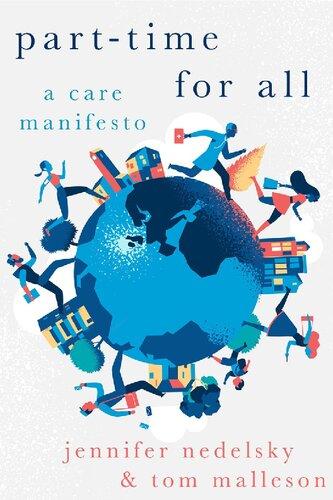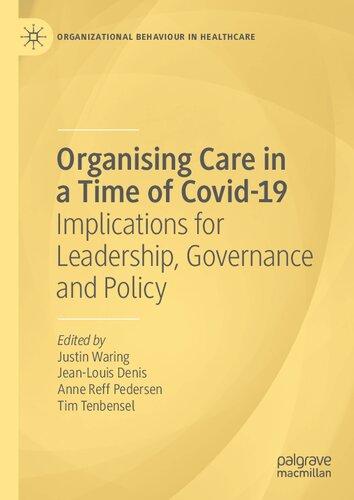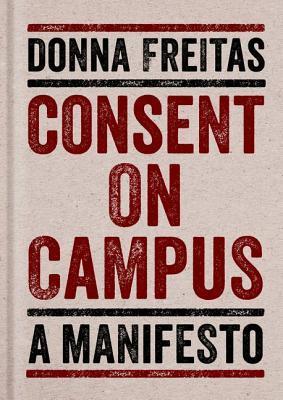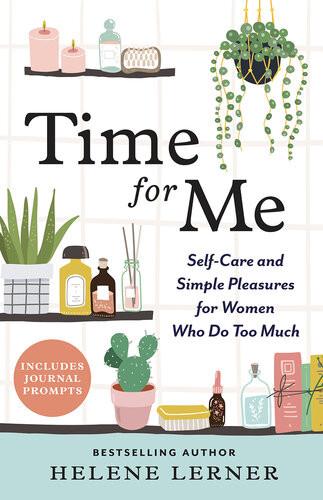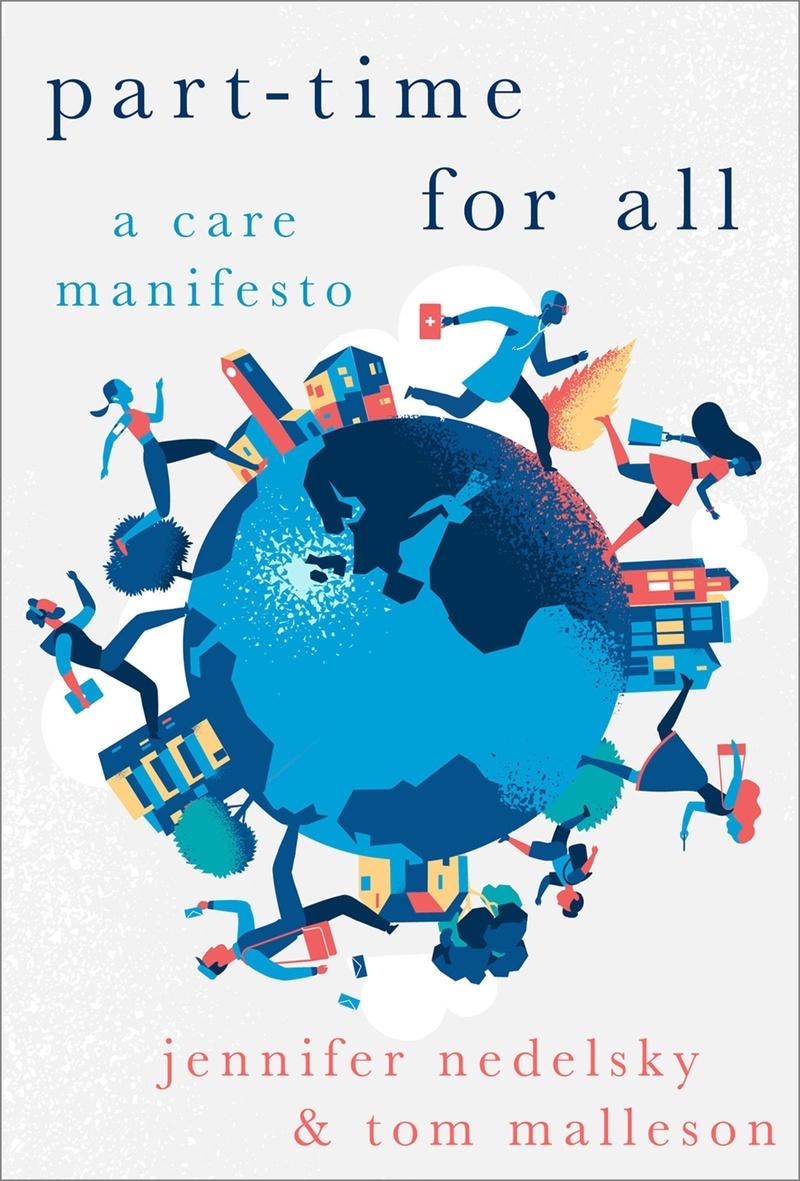Acknowledgments
Part time for All had its origins in an essay Sara Ruddick invited me to contribute to the book Mother Troubles (1998). That invitation gave me space to work out ideas that I had thought I could never find a place to publish. It is a pleasure to be able to offer my gratitude and return to her work here.
Once I started on this book, I found help and support in many places. The first time I presented a version at the American Political Science Association, Joan Tronto asked a question about guaranteed annual income, and I replied that I did not have the expertise for the political economy side of the issues. Tom Malleson was in the audience and introduced himself to me after the panel saying he had that expertise. That was the beginning of a wonderful collaboration. In addition to providing that vital contribution, he edited the entire manuscript down from an unwieldly size. And he provides a living model of someone who resists over identification with “work,” thus freeing himself from the usual academic hang ups and becoming available for generosity, care, responsibility, and activism, as well as “work” that advances equality.
I have been extremely fortunate in the institutional support I have had. In 2016–17 I held a research fellowship at the Jackman Humanities Institute at the University of Toronto, which gave me a year off teaching. The theme that year was “time” and there was an exceptional group of people from many disciplines who helped me think through the puzzles of time. Between 2014 and 2018, I spent six weeks each Spring at the Institute for Social Justice in Sydney, Australia. Nick Kompridis and Allison Weir had gathered an extraordinary group of scholars who provided some of my most important conversations as the project unfolded. The visits also allowed me to participate in multiple forums of the wonderful Australian feminist community.
Osgoode Hall Law School at York University offered a special opportunity by creating a part time job for me. Although it turns out that neither they nor I anticipated some of the complications (the work world is not set up for equal status for part-time workers), Osgoode has provided a great environment for me to teach and write while finishing the book.
I am grateful for thoughtful feedback from students at both the University of Toronto and Osgoode.
Libraries at the University of Toronto and Osgoode Hall have provided important support, but I am particularly grateful for all the help I have received as a retired faculty member from the University of Toronto law library and would like to thank Sufei Xu in particular.
It has been a tremendous help to have been able to present these ideas at many different forums, with different kinds of audiences, and in different parts of the world, both in person (pre-COVID) and virtually. I am not going to try to name them all. But I do want to mention the Care Forum run by Dan Engster at the University of Huston, which provides a great virtual space for conversations about care, and the wonderfully innovative series of events, including Epistemologies of Care, Visualizing Care, and Revaluing Care in the Global Economy, organized by Jocelyn Olcott and her colleagues at Duke and around the world
In addition, I was able to discuss my ideas with nonacademic audiences thanks to Bathurst Street and College Street United Churches, and to the generosity of Sarah Polley in convening a wonderful group of women in my kitchen and in offering her living room for a session on Part Time for All as part of Joanna Polley’s Plutarch’s Table Salon.
There are so many individuals who have offered comments, advice, encouragement, and new perspectives that it is a risk to mention any given that omission is the norm here. Nevertheless, I want to mention Judith Resnick who read a very early draft and was one of the first to make clear to me that revaluing care was really a central objective of the project. I was honored to get some early encouragement from Nancy Fraser, whose work is so foundational to this project. Joan Tronto has been an important interlocutor throughout. My oldest friend, Carlin Meyer, offered an early warning about Part Time for All being seen
as a form of privatization. Another early warning about middle class bias and preoccupation came from Clare Huntington. At an Osgoode reading group, where I got great feedback, Adrian Smith provided a crucial heads up about the way I was distinguishing activism and care. Rainer Forst, who allowed himself to serve as the voice of “liberal reason,” helped me articulate why I believe Part Time for All does not unreasonably impose a vison of the good life on others. Finally, Paul Raynor, of Hobart, Tasmania, Australia gave me great encouragement and very helpful insights as someone who had already adopted the norms of Part Time for All (and great hospitality).
Osgoode has an excellent system of supporting its faculty and students by funding research assistants. Both Maria Arabella Robles and Jen Laws provided excellent research, suggestions, editing, and manuscript preparation.
In sum, I am incredibly grateful for the many conversations over the years that have enriched this work. Some of these took place in the context of “work,” but almost always in a spirit of care. Care about the project and my engagement with it became part of the “work” of others. The foundation for all of this was the care my husband, Joe, provided me and our family, which enabled me to share with others my ongoing efforts to enable everyone to blend, mix, and balance work and care in a life sustaining way.
Of course, despite all this help and support, limitations remain. I know I did not sufficiently meet every valid objection and errors have no doubt remained for which I am responsible. I hope transformation gets started nevertheless, and future efforts will carry us all forward.
I. The Problems
A. Stressed Families
We begin by briefly identifying each problem that the new norms of work and care are meant to address. The first is the unsustainable structure of work and family life that puts enormous stress on families, and forces workers (at all levels) into untenable choices between work and family. The stress has serious consequences (including health and autonomy) for all, and almost certainly harms children with long term, intergenerational consequences.
Almost all families experience this stress, although they experience it very differently.4 Women’s workforce participation is increasing around the world.5 The increase puts pressure on families that have long been organized around unpaid care by women in the home, especially since few countries have responded with either changes in the demands from the workplace or good alternative sources of care. Indeed, instead of accommodating to women’s decreased availability for care, workplaces, especially in the Anglo world, are increasing the number of hours they require. Of course, this varies greatly from elite jobs requiring 60–70 hour weeks to the millions of people surviving on multiple precarious jobs and racking up long (often unpredictable) hours of work and commuting, and trying to fit childcare and elder care into that mix.6 Although the stresses of these two groups are extremely different, stressed families are a common result.
The popular press in North America tends to focus on the challenges faced by families where both parents work (i.e., dual income families), and where at least one of the parents does professional or managerial work.7 The working elite in the rich countries have in many instances traded leisure (for centuries a privilege of the wealthy) for very large salaries and very long hours. About 62 percent of high earning Americans work more than 50 hours a week, 35 percent work more than 60 hours a week, and 10 percent more than 80 hours a week. Other countries have similar trends.8 At the very top, the scale of salaries is relatively new and disturbing. In 1965, the ratio between the income of CEOs and their average workers in the United States was 20 to 1. Now it is approximately 300 to 1.9 The norms around what kinds
of salaries are “appropriate” have changed drastically. These norms are relevant to family stress because they mean that the people who get elite jobs usually need to work very long hours, while the people at the lower end have to work long hours to make ends meet and to keep their jobs. Moreover, the hours required at elite jobs reinforce a problematic association between long hours and “success.”
In discussions of the work-family tensions of the professional and managerial class, the focus is often on women, as if the problems of “work-family balance” (as it is often called) are primarily a women’s issue. Of course, there is some reason for this. Women still do most of the care for children, elderly, and household maintenance.10 And women more commonly put family ahead of work and so pay financial and career advancement penalties, in addition to stress. Women who want to compete for top-level positions face huge hurdles, especially the incompatibility of long hours with the family commitments they often want to maintain.11
At the elite level, people have money to buy care and thus to relieve some of the stresses of competing time demands from work and family. High earning women (and, in principle, men and nonbinary people) often have the option of leaving their successful careers to stay home and rely on their partner’s high income (and long hours). Stress at this elite level does not include anxiety about whether children will have enough to eat or be apprehended by state authorities because they were left alone or looking after younger children when childcare was unavailable.12 Nevertheless, the stress is real and approximately 65 percent of families have parents working a combined 80 hours a week, and 12 percent working more than 100.13 For many people, the work they have trained for, the most interesting jobs, are only available if they are willing to work manic hours putting a huge strain on their family life.14 Many of these workers would like to work fewer hours.
While the popular “work-family balance” articles tend to focus on the fully employed, dual income families, everyone knows that there are also many people who are struggling to find enough work. They, of course, want more hours of work. Other people, doing multiple, precarious jobs often need more money, but they do not actually want to spend more hours working, searching, and commuting. What they need is stable, decently paid work. (There is evidence that increasing
the stability of work is even more important than increasing income for the well-being of families.15) People who are trying to raise families while stuck in precarious work with no security, no benefits, and unpredictable hours face extraordinary levels of stress, as do their children.16 For them, the existing structure of work is deeply corrosive of satisfying family life that provides the time and security for nurturing relationships.
Finally, when we talk about family stress, we recognize that family forms are changing. The rise of single parent families in North America and Europe is one part of the rapid change in the structure of families.17 An increasing number of children are born to parents who are not married, a pattern that in the United States is heavily shaped by class.18 There are also increasing numbers of families formed by queer couples, and by more than two parents, as well as by extended families where children are cared for by grandparents, other relatives, or collectives of friends. Rethinking the structures of work and care to relieve family stress needs to be done in light of the evolving formations of family. We believe that PTfA will support greater freedom in the choice of family formation and will make life better for all family forms.
B. Equality
The second problem is equality. Providing care is not highly valued, and this low status, low paid activity is not equally distributed. Not everyone takes a turn providing the care that their children, parents, spouses, or friends need. On the contrary, care is organized on the basis of status hierarchies. Those on the top—rich, white men—do very little of it. They get others to do it for them. And those “others” are not random; they are people whose gender, race, class, ethnicity, and citizenship status mark them as less important, less valuable, or lower status. One need only look around to see who takes care of children, tends the elderly, or assists the disabled to see this inequality at work. The patterns are so obvious that it should be clear that they are not simply the result of individual preferences. Gender norms sustain the patterns, because both men and women have been socialized to believe that women have a responsibility (and sometimes a natural aptitude)
for care. Long histories of exclusion from opportunity and advantage shape this pattern, as low paid care jobs are often the only ones available to people marked by intersecting hierarchies of gender, race, class, and citizenship. Economic and social coercion are, therefore, central to the organization of care.19
Until these long-standing links between care and hierarchy are broken, care cannot be organized in a way consistent with equality, and thus equality itself will be unattainable. The long history of linking care with subordination is such that as long as only a subset of the population provides care, both care and the people who do it will be devalued. The fact that people seen as “lesser” (on the basis of race, class, gender, citizenship) provide care, which is seen as a lowly form of work (when recognized as work at all), reinforces the appropriateness of the low status of both the people and the care they provide.20 When whole groups of people, such as those who provide care, are seen as “lesser,” the resulting society will inevitably be systematically unequal.
It is also true that a just system of care will be impossible as long as power and advantage are organized around hierarchies such as gender, race, citizenship, and class. As long as there are systemic inequalities there will be powerful incentives to get people at the bottom to do lowpaid (or unpaid) care. Thus, societies can only achieve equality when the distribution of care is just, and they can only achieve a fully just distribution of care when there is equality.
Of course, the most obvious category around which care is organized is gender. Around the world and throughout history, women have been the primary care providers. Yet today it is increasingly obvious that gender intersects with other categories, such as race, class, and citizenship status. Care givers in wealthy countries are not just predominantly female, but are also racialized women and immigrant women. And while women around the world are increasingly entering the paid labor force, they are hiring poorer women from elsewhere to provide care through the global care chain.21
Despite some modest changes in the past few decades, the shift in gender norms and the inequality of women improves at a glacial pace (or what a glacial pace used to be before global warming), leaving women with less pay, less economic security, vulnerability to poverty, less leisure time, and less access to top jobs and other advantages
such as high-quality health care. This inequality is tied to (although, of course, not exclusively caused by) women’s unequal share of care responsibilities.22 The failure to achieve equitable care arrangements also affects both autonomy and democracy.23 Women who come home from a full day of work to another four to six hours of care work have little time for either personal reflection or political action to change the conditions of their lives.
As women increasingly enter the paid labor force, much of the care work they used to do for free becomes part of the market economy.24 The global care chain of imported care workers is a big part of this marketization of care, and it includes racialized and immigrant men. They mark some shift in the historic link between gender and care but maintain the connection between the low status of care and those who do it. The global care chain provides economic opportunity for people in low-income countries, but it does little to shift either global inequality or the inequality in the receiving countries where the imported workers join other low-paid and stigmatized workers in the care sector.25
The link between gender and the degradation of care is part of the bigger picture that gender inequality is incredibly resistant to change. According to the International Labor Organization, “between 1997 and 2012, the gender gap in time spent in unpaid care declined by only 7 minutes (from 1 hour and 49 minutes to 1 hour and 42 minutes) in the 23 countries with available time series data. At this pace, it will take 210 years (i.e., until 2228) to close the gender gap in unpaid care work in these countries.”26 A central contention of this book is that we will never obtain gender equality until we rearrange the distribution of care, which itself requires the transformation of paid work. In other words, it’s important to see that the central reason why gender inequality has proven so resilient and difficult to overcome is that the problems are not rooted in any one place. Rather, gender inequality is the result of a number of causal processes, both institutional and cultural, that feed off each other and sustain each other, resulting in a relatively stable social system that gets reproduced again and again. This is important to appreciate because it means that changing gender relations requires making changes to cultural norms and economic workplaces simultaneously; it requires changing negative feedback loops into positive ones.
Consider the following mix of norms and economic structures which together reinforce gender inequality:
(i) Gendered norms of women as inherently and “naturally” care givers put immense pressure on women to do the bulk of caring and housework, resulting in unequal sharing of caregiving responsibilities,27 as well as unequal success in the labor market: over a 15-year period, women earn only 49-cents to the dollar that men earn.28
(ii) Gendered norms of men as inherently and “naturally” breadwinners put immense pressure on men to prioritize their jobs over care concerns. Long hours of full-time work prevent men from spending substantial amounts of time caregiving. This both reinforces the pressure on women to do such work and deskills and undermines male capacities for care and nurturance, so that women are overworked, and men are underdeveloped. At present the conventional and old-fashioned norms of women as primary care givers and men as primary breadwinners continue with force. These are zombie norms; no matter how many times they are killed with evidence or counter-example, they continue marching on.29
(iii) Once heterosexual couples have children, the gendered wage gap makes it economically rational for them to divide work in traditional ways, thereby reproducing gendered lives. The family decision to maximize earning potential by having the man work has longstanding effects on gender equality. It reduces women’s skills and experience, deepens the pay gap, and reinforces gender stereotypes of women as primarily care givers and men as primarily workers.
(iv) Inflexible workplaces make it hard for care givers to move fluidly in and out of work. A number of important consequences flow from this inflexibility. First, it means that women who stay in the workforce find themselves working a double-shift of long hours at work combined with long hours at home.30 Second, it leads to a number of women dropping out of the labor force altogether, which hurts their economic independence and their cultural status. The conclusion of Pamela Stone’s study on why
professional women leave their careers is that these women are not “opting out,” rather the inflexible structure of workplaces means they are essentially being shut out.31
(v) The norm that a career requires full-time, continuous work is penalizing to care givers. The consequence being that women must choose between work or family, and invariably cannot “have it all”.32 Moreover, this means that women, and mothers in particular, are deprived of the best jobs and the highest earnings since these tend to be tied not only to full-time work, but to work with particularly long hours.33 This again perpetuates the gender earnings gap.
(vi) The lack of affordable and accessible childcare makes it hard for women to balance work and care, again constricting women’s access to the labor market and reinforcing norms of female care givers.
(vii) Part-time jobs are often unattractive because they offer lower wages and worse benefits than full-time work. The consequence is that it reinforces the desire of men to work full-time, which then means they are unavailable for caregiving, which again sustains the pressure on women to do such work. A second important consequence is that part-time work can reinforce gender inequalities by channeling women into low-paid jobs or confining them to the lower rungs of career ladders, again reinforcing gender divisions.34
(viii) Unregulated market competition means that firms can generally make more profit by extending working hours. Competitive pressure makes it harder for firms to introduce family-friendly policies if their competitors are not doing so.35 And, of course, the longer the required working hours, the greater the gender imbalance in terms of who is willing to work them. Arlie Hochschild puts it this way, “The long hours men devote to work and recovering from work are often taken from the untold stories, the unthrown balls, and uncuddled children left behind at home.”36
(ix) The centrality of wealth and consumption to the contemporary ideal of a good life makes full-time work seem vitally important. This makes it harder for men or women to opt out of the full-time rat race and puts indirect cultural stigma on those who prioritize unremunerated caregiving.
The bottom line is that gender inequality is sustained by the mutually reinforcing nature of norms and workplace structures. Hence, the only way that we will ever reach true gender equality is by changing both cultural norms and workplace structures in tandem. Part-Time for All, we believe, is the only feasible way to achieve this.
C. The Care/Policy Divide
Of our four concerns, this third problem is the least commented on in the now extensive literature on care. We call it the care/policy divide. This means that those in top policymaking positions—those in government, managers, and CEOs of firms, as well as the private investors and financiers who exert so much control over our collective future—are almost always people with very little experience of the demands, satisfactions, or importance of care taking. In our view, this means that policymakers are, for the most part, ignorant of a core dimension of human life. This renders them unfit for the job. We should no more consider electing someone without substantial experience in caregiving to public office, or appointing them CEO of a corporation, than we would someone who had never held a job. Those who do have the requisite knowledge and experience (primarily women) have very limited access to high-level policymaking positions. Our claim is that knowledge of care is essential to good policymaking, and the necessary knowledge can only be acquired by hands-on experience. Reading reports, or novels, or talking to one’s mother, while useful, is no substitute. To ensure that everyone has the capacity to make and evaluate policy, everyone needs substantial experience in providing care. It is probably obvious why people who are making decisions about childcare (whether a national childcare policy, or a decision about onsite childcare at a corporation, or how to license in-home care) need to have some understanding of both the specific issues around quality care and the nature of families’ needs. Something similar could be said about after-school programs, early childhood education, and aid for families caring for the sick and elderly. But there are many other policy fields—health care, social assistance, labor and employment, housing and city planning, communications (including access to the internet),
transportation, finance and taxation, parks and recreation, human rights, foreign aid, democratic participation, immigration, pensions, support for the elderly—which require knowledge of the centrality and significance of care for individual, family, and community well-being. Without such knowledge, policymakers will not only be without the information they need to implement good care, but they will not recognize when a policy (like inadequate public transit) will have an important impact on care—and thus on families and communities. At the deepest level, they will not have the knowledge of the value of care, which is necessary for wise judgment in the face of inevitable tradeoffs between competing policy objectives and costs.
Many efforts to make the gendered division of care compatible with gender equality fail to address the problem of policymakers who are ignorant about care. For example, Wages for Housework, or wellpaid and long-term maternity leave, or part-time work that is overwhelmingly taken up by women, or pensions for homemakers—none of these will solve the care/policy divide. Indeed, even fixing the gendered division of care would not be sufficient, although it is necessary. Only breaking the link between care and hierarchy can do it. As long as one group of people does the policymaking and a different group provides care, society will still suffer from ignorant policymakers. This would remain true even if the care givers were better protected and compensated than they currently are, and it would remain true even if women gain access to high-level policymaking by leaving care to be done by others.
D. Time
The problems of family stress, inequality, and the care/policy divide all intersect with the issue of time: time scarcity and the warping of the experience of time.37
It is not just women who suffer the loss of autonomy and judgment that comes from the acute time scarcity of the current structure of work and care. When people are constantly stressed by long hours of work, multiple competing demands, and compounded by anxiety about the future of their jobs, they do not have time for reflection or the habits of
receptive thoughtfulness. At a personal level, reflection and a stance of openness to perception and possibility are necessary for people to figure out what matters most to them, how they want to live their lives, what relationships most nourish them, how they can best foster such relationships, and how they can best share their gifts. At the social and political level, the current structures of work and care are a recipe not only for a wide variety of social ills, but for a population too stressed and exhausted to protest them.
Some of the most important forms of human connection—playing with children, caring for the sick, cooking food for loved ones—are experienced as chores for which people do not have the time. They need to be done quickly and efficiently so that people can get to their other chores and try to get enough sleep so that they can get through long hours of work. There is no time for the slow rhythms of care with its often vital attention to the details of the moment. Forcing that rhythm into haste makes the tasks stressful and unpleasant instead of connecting and sustaining. Not only do people lose the pleasure of care but rushing erodes their knowledge of its potential for connection and thus its core importance for human well-being. This loss affects not only individual but societal understanding of the value of care and thus compounds the ignorance of high-level policymakers who have virtually no experience of care.
These high-level policymakers (in both government and corporate contexts) work under the extreme time pressure of long hours and urgent deadlines. All of us are likely to suffer the consequences. As Rosa Brookes put it in the Washington Post, “When did we come to believe that crucial national security decisions are best made by people too tired to think straight?”38
Not only is people’s judgment impaired by time scarcity, but there is increasing evidence that their creativity, indeed their basic efficacy, is undermined by long hours.39 Even people’s health is affected by time scarcity, with its complex links to the structures of work and care.40
Moreover, the commonly proposed solutions to pressures of work and care, flextime, and working from home, create their own time problems. Brigid Schulte writes eloquently about the harms of “fractured time,” where there are always multiple, competing commitments.41 And “flexibility” has, notoriously come to mean that
employers can change their employees’ hours of work on a whim and at the last minute.
Finally, consider the invocation to “stop and smell the roses.”42 The phrase points to another harm of the current structures of work and care: the difficulty of finding time to enjoy nature and the connection with the earth. The image of stopping to smell the roses suggests that this connection, too, requires the slow pace that fosters receptivity, openness to our bodily senses, and attention to the detail of the moment. Indeed, speed and time scarcity foster not just a remove from the earth, but from one’s own body (at least until pain signals become urgent). We increasingly become like James Joyce’s Mr. Duffy, who “lived at a little distance from his body.”43
In sum, our claim is that the (integrated) problems of family stress, equality, the care/policy divide, and time scarcity cannot be fixed until everyone, no matter how high their status, participates in part-time unpaid care and part-time paid work.
E. Scope and Context
We believe that versions of these problems are present all over the world, although they can of course take very different forms. For example, the need to emigrate to find work is not one that characterizes rich societies, although they rely heavily on the work of immigrants, particularly for care work. The impact on family life is very different for “sending” and “receiving” countries. The importance of a conversation about norms of employment and care applies everywhere, but our particular proposal may not be applicable in counties with widespread poverty.
We address our particular recommendations to high income societies, and the examples we draw on come largely from Europe and the “Anglo countries,” the United States, Canada, the United Kingdom, Ireland, Australia, and New Zealand. But given the realities of the global care chain, the common practice of hiring poorer women to provide care as wealthier women increasingly enter the paid workforce, we believe that the topics of this book are relevant everywhere, even if the particulars of the solutions will necessarily be different for different contexts.
The degradation of care is a very old problem. But the particular exacerbation of the tensions between work and care in the contemporary society is relatively new. There are many causes and consequences of the current structure of work, with its long hours for the elite, and the precarity and insecurity for almost everyone. But one piece of the story is that large numbers of women have joined the paid workforce, and there is a move all over the world to get more women into fulltime employment. It is as though there has been an unspoken collusion: women wanting gender equality demand access to full-time jobs because they rightly see that part-time employment has not been a path to real equality; governments think that women working full time will increase their country’s economic output; employers get access to relatively cheap labor. But no one has figured out a new way to organize care and work once the women who had been providing free care began spending long hours in the paid workforce. So, women now do both.44 Work remains organized around an assumption that someone other than the worker is looking after their care needs and those of their family. The “ideal worker” is still someone who shows their commitment by putting their job first and putting in long hours to prove it.45 Women are forced into the impossible situation of trying to meet those standards as well as providing the care at home. Men are encouraged to identify with work and neglect care. Everyone is taught that work is more valuable.
Perhaps the failure to take account of the impact on care of bringing women into the workforce is itself part of the degradation of care: the widespread failure to pay attention to care, to recognize the value of care as essential to human life and well-being. It is as though the common failure of individual men to notice the care they are dependent on has been mirrored in a collective failure: blindness to the need to change both work and care now that the traditional care providers are expected to be out of the home earning money.46 The effects of this massive policy lapse are played out in stressed households, rising health problems, including an epidemic of anxiety and depression, and costs to employers. The harms are unevenly distributed—a single mother’s anxiety over how to make enough money to pay the rent and make sure her child is well cared for is not the same as the stressed finance worker who takes cocaine to make it through 10-hour days and has a
